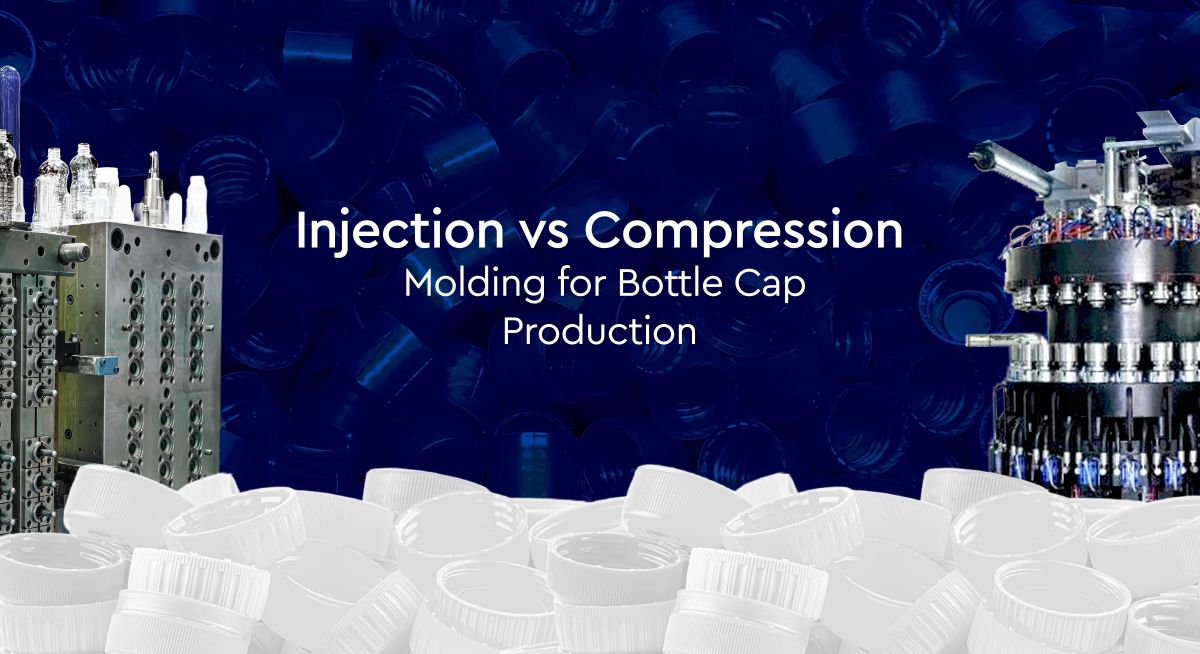Maximizing Agricultural Productivity with Mulch Films: A Game-Changer in Specialty and Engineering Films


Thermoplastic is melted and injected into a mould under high pressure. Once the mould is filled, the material rapidly cools and hardens into shape before being ejected. This process is highly automated, making it suitable for mass production.
Fast production: Typically, 2-5 seconds per cap & Upto 216 cavities, ensuring high-volume output.
Precision and consistency: Maintains tight tolerances (±0.01 mm) for uniform cap quality.
Versatility in design: Allows for intricate shapes, logos, and tamper-evident features.
Material flexibility: Compatible with a wide range of polymers, including HDPE and PP.
Higher initial investment: The cost of machinery and moulds is significant.
Greater energy consumption: Due to high processing temperatures and pressure requirements.
A preheated plastic pellet or sheet is placed in an open mould cavity. The mould then closes, applying heat and pressure to shape the cap. After cooling, the finished cap is removed.
Lower production costs: Requires less expensive machinery and tooling.
Energy efficiency: Operates at lower temperatures, reducing power consumption.
Minimal material waste: Generates less scrap compared to injection moulding.
Moderate production: Typically cycle time, 1.5--4.0 seconds & Upto 48 cavities, thus limiting output.
Limited design flexibility: Less suitable for complex geometries and detailed branding.
Higher variation risks: Slight inconsistencies in pressure and heat may lead to dimensional variations.
Your choice depends on production needs, budget, and design complexity:
Need high precision, speed, and intricate designs? Go for Injection Moulding.
Looking for cost savings and simpler cap designs? Choose Compression Moulding.
With the rise of lightweighting, sustainability, and smart packaging trends, injection moulding remains the preferred choice for advanced cap designs, while compression moulding offers a cost-effective alternative for basic closures. Evaluating your production volume, material requirements, and design specifications will help determine the best method for your needs.